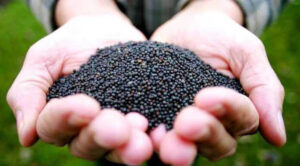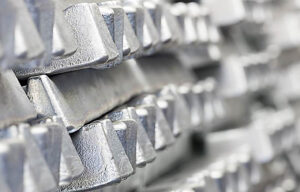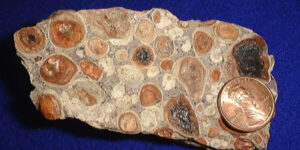
Ukraine exported 3.14 mln tonnes of rapeseed in the season-2024/25 (July 2024 – June 2025, marketing year, MY), down 15% compared to the previous marketing year and the lowest for the last three seasons, APK-Inform news agency reported.
The main reason for the decline, analysts said, was the decline in the oilseed harvest in Ukraine for several years in a row.
The experts pointed out that almost 89% of the total exports of rapeseed were to the European Union (91% in 2023/24 MY), or 2.78 mln tonnes, down 17% compared to 2024/25 MY. In terms of countries, the top three importers of Ukrainian rapeseed were Germany with the volume of over 1 mln tonnes (-18%), Belgium – 899 thsd tonnes (up 2.4 times), and the UK – 334 thsd tonnes (up 2.5 times).
“In the new season-2025/26, the downward trend of rapeseed exports is likely to continue, due to the expected minimum harvest of the crop in the last 4 years, as well as the possible introduction of the export duty for the oilseed, which is currently actively lobbied,” – the analysts said.
APK-Inform forecasts that in 2025/26 MY the exports of rapeseed from Ukraine will decrease by another 15%, to 2.7 mln tonnes.

In January-May 2025, Ukraine imported aluminum and aluminum products worth $206.628 million, up 20.2% compared to the same period in 2024. In May, imports of aluminum products amounted to $40.340 million.
Over the same period, aluminum exports increased by 31.9% to $57.761 million. In May, the company exported products worth $12.698 million.
In 2024, aluminum imports amounted to $446.006 million (+21.7% compared to 2023), and exports amounted to $124.408 million (+27.4%). In 2023, Ukraine imported aluminum products worth $366.463 million and exported $97.616 million.

In January-May 2025, Ukrainian companies reduced imports of nickel and nickel products by 28% year-on-year to $7.976 million. In May, nickel products worth $3.071 million were imported.
At the same time, Ukraine’s nickel exports amounted to $443 thousand, which is almost twice as much as in the first five months of 2024 ($242 thousand). In May, exports amounted to $69 thousand.
For comparison: in 2024, imports of nickel products to Ukraine increased by 73.7% to $26.730 million, while in 2023 they amounted to only $15.391 million. Exports in 2024 amounted to $602 thousand, and in 2023 – $532 thousand.

In January-May this year, Ukraine increased imports of coke and semi-coke in physical terms by 20.6% compared to the same period last year, up to 256.628 thousand tons from 212.768 thousand tons.
According to statistics released by the State Customs Service (SCS) on Friday, coke imports in monetary terms increased by 7.4% to $82.920 million during this period. It was imported mainly from Poland (88.31% of supplies in monetary terms), Indonesia (9.84%) and the Czech Republic (1.83%).
In the same period, Ukraine exported 3 tons of coke to Albania for $2 thousand.
As reported, Metinvest suspended operations of Pokrovske Coal Group in January this year due to changes in the situation on the frontline, electricity shortages and the deteriorating security situation.
Last year, Ukraine increased imports of coke and semi-coke in physical terms by 2.01 times compared to 2023, to 661.487 thousand tons, mainly from Poland (84.76% of supplies in monetary terms), Colombia (7.74%) and Hungary (2.69%). In monetary terms, imports increased by 81.9% to $235.475 million.
In 2024, the country exported 1,601 thousand tons of 84.76% coke worth $368 thousand to Moldova (99.18%) and Latvia (0.82%), while in January, March, October and November 2024, there were no exports, while in 2023, exports amounted to 3,383 thousand tons worth $787 thousand.

In January-May of this year, Ukraine increased imports of aluminum ore and concentrate (bauxite) in physical terms by 3.88 times compared to the same period last year, to 13,564 thousand tons from 3,501 tons.
According to statistics released by the State Customs Service (SCS) on Friday, during this period, imports of bauxite in monetary terms increased 2.8 times, to $1.532 million from $550 thousand.
At the same time, imports came mainly from Turkey (79.23% of supplies in monetary terms) and China (20.77%).
Ukraine did not re-export bauxite in 2025, as in 2024 and 2023.
As reported, in 2024, Ukraine increased its imports of bauxite in physical terms by 77.4% compared to 2023, to 35,173 tons, and in monetary terms by 74%, to $4.107 million. Imports came mainly from Turkey (78.48% of supplies in monetary terms), China (19.48%), and Spain (1.9%).
In 2023, Ukraine imported 19,830 tons of bauxite worth $2.360 million.
In 2022, Ukraine reduced imports of aluminum ores and concentrates (bauxite) in physical terms by 81.5% compared to the previous year, to 945,396 tons. Imports of bauxite in monetary terms decreased by 79.6% to $48.166 million. Imports came mainly from Guinea (58.90% of supplies in monetary terms), Brazil (27.19%), and Ghana (7.48%).
Bauxite is an aluminum ore used as a raw material for the production of alumina, which is then used to produce aluminum. It is also used as a flux in ferrous metallurgy.
Bauxite is imported into Ukraine by the Mykolaiv Alumina Plant (MAP).

The rye deficit in the 2025/2026 season will be 100%, which will inevitably lead to an increase in the price of rye bread, said Rodion Rybchinsky, director of the Ukrainian Flour Millers Association, in an interview with Interfax-Ukraine.
“We can say with certainty that there will be a 100% rye shortage in the 2025/26 season. Already, Polish rye is being partially processed in Ukraine, and bakers are using Baltic rye flour. Unfortunately, this is our reality,” he said.
According to the head of the industry association, the reason for the rye shortage is the unwillingness of agricultural producers to sow the crop, as its yield is one-third lower than that of wheat—40 centners per hectare versus 60 centners per hectare, respectively.
In addition, the entire deficit was previously covered by Belarus, which led to a reduction in rye production in Ukraine—it was difficult for farmers to compete with supplies from Belarus. At the same time, rye is not a popular export crop. Demand for rye is only on the domestic market.
Rybchynsky pointed out that the current price of rye is more than competitive: while in 2024, 1 ton of rye cost 6-7 thousand hryvnia, as of May 2025, it costs 12-14 thousand hryvnia.
When asked whether the rye shortage would lead to higher prices for rye bread, the expert emphasized that prices would definitely rise.
“Currently, the price of Ukrainian rye flour is 18,000 hryvnia per ton, and imported raw materials cost about 20,000 hryvnia, while last May, rye flour cost 10,000 hryvnia. It will not just be a rise in the price of rye bread—many bakery producers will simply stop baking it,” he stressed.
The head of the Ukrainian Millers Association predicts that Ukraine will experience a rye deficit in the 2025/2026 marketing year and will have to purchase it on foreign markets at European prices. This will make rye attractive to Ukrainian farmers. Therefore, in the 2026/2027 marketing year, agricultural producers will most likely increase the area under rye, which could stabilize the market situation.